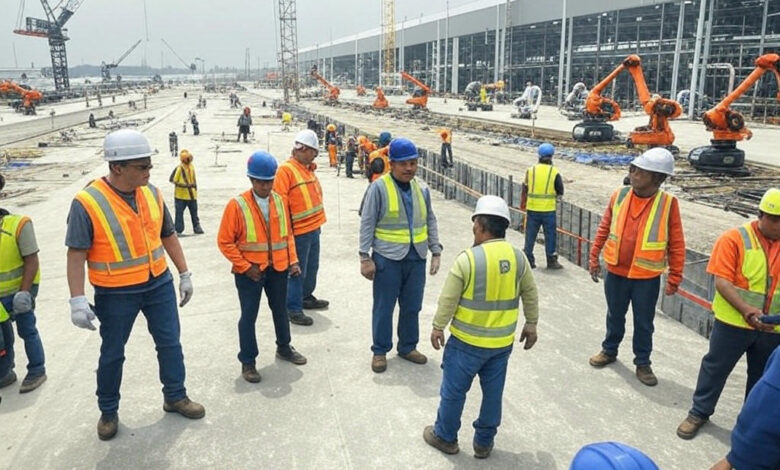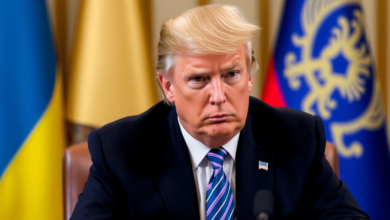Trump’s Auto Tariff Pause: What’s Next?

In a rapidly evolving global trade landscape, President Donald Trump’s recent suggestion to temporarily pause his auto tariffs has sparked widespread discussion among industry leaders, policymakers, and consumers. Initially introduced to bolster American manufacturing, these tariffs have sent ripples through the automotive sector and the broader economy. This article delves into the motivations behind the potential pause, its implications for automakers and consumers, the global trade dynamics at play, and what the future may hold for U.S. trade policy.
The Auto Tariffs
Background and Initial Implementation
On March 27, 2025, Trump announced a 25% tariff on all imported vehicles and key auto parts, describing the measure as a “permanent” step to strengthen U.S. auto manufacturing. The policy aimed to incentivize companies to relocate production to American soil, creating jobs and reducing reliance on foreign supply chains. The tariffs applied to passenger vehicles, SUVs, minivans, light trucks, and critical components like engines and electrical systems, affecting major trade partners such as Canada, Mexico, Japan, and Germany.
However, the immediate impact was turbulent. Automakers faced higher costs, stock markets fluctuated, and consumers braced for potential price hikes. The interconnected nature of global supply chains—where parts cross borders multiple times before a vehicle is assembled—made the tariffs particularly disruptive. For instance, a single car assembled in the U.S. might still rely on Canadian steel or Mexican electronics, meaning even domestic manufacturers felt the pinch.
Reasons for Considering a Pause
Trump’s recent comments, made on April 14, 2025, signal a shift in approach. Speaking to reporters in the Oval Office, he acknowledged that automakers “need a little bit of time” to adjust their supply chains. This flexibility reflects a response to mounting pressure from industry stakeholders, including the “Big Three” automakers—General Motors, Ford, and Stellantis—who have lobbied for relief. The pause is also a pragmatic move to mitigate economic fallout, as financial markets have shown volatility amid fears of a broader trade war.
Additionally, the pause aligns with Trump’s broader strategy to balance economic growth with political capital. With midterm elections looming, easing tariffs could stabilize consumer prices and appease voters concerned about rising costs. The decision also follows a 90-day pause on other “reciprocal” tariffs announced earlier, indicating a pattern of tactical retreats to allow negotiations with trade partners.
“I don’t change my mind, but I’m flexible,” Trump said, highlighting his willingness to adapt trade policies to economic realities.

Impacts on the Automotive Industry
Challenges for Automakers
The auto tariffs have already prompted significant operational shifts. Companies like Jaguar Land Rover paused exports to the U.S., while Stellantis idled factories in Canada and Mexico, laying off workers in Michigan due to disrupted supply chains. The 25% tariffs on steel and aluminum, combined with the auto levies, have compounded costs, forcing manufacturers to rethink sourcing strategies.
For example, a typical mid-sized sedan might see its price rise by $5,000 to $10,000, according to industry analysts. This cost increase stems not only from tariffs on finished vehicles but also from higher prices for imported parts. Smaller automakers, lacking the resources to quickly relocate production, face particular strain, potentially reducing their U.S. market share.
Opportunities for Domestic Growth
Despite the challenges, the tariffs have spurred discussions about expanding U.S. manufacturing. Trump’s vision is to create a robust domestic auto sector, and some companies are responding. Hyundai, for instance, announced a $21 billion investment in U.S. facilities, including a new steel plant in Louisiana. Such moves could create thousands of jobs and reduce dependence on foreign imports over time.
However, scaling up domestic production is a long-term endeavor. Building new factories or retooling existing ones takes years, and workforce training adds further delays. In the interim, automakers must navigate higher costs and supply chain bottlenecks, which could limit the immediate benefits of tariff-driven policies.
“U.S. automakers are committed to President Trump’s vision of increasing automotive production and jobs in the U.S.,” said Matt Blunt, president of the American Automotive Policy Council.

Consumer Implications
Rising Costs and Market Dynamics
For American consumers, the tariffs threaten to make car ownership more expensive. With half of the 16 million vehicles sold in the U.S. in 2024 being imports, a 25% tariff could significantly inflate prices. Used car markets are also affected, as reduced supply and higher demand drive up costs for budget-conscious buyers. For example, a family shopping for a $25,000 used sedan might now face prices closer to $30,000.
Car insurance premiums are another concern, as higher vehicle values lead to increased coverage costs. Rural and working-class consumers—key segments of Trump’s voter base—are particularly vulnerable, as they often rely on affordable vehicles for daily commutes and livelihoods.
Potential Relief from a Tariff Pause
A temporary pause could offer short-term relief by stabilizing prices and allowing automakers to maintain current inventory levels. Dealerships, which have faced uncertainty over pricing, might delay passing costs to consumers, preserving affordability for now. However, the pause’s duration—potentially one month or 90 days—remains unclear, leaving consumers and businesses in limbo.
“Most families in need of a family car are paying prices that approach nearly half of what their home may be worth,” said Burnis Carrington, a Louisiana car buyer, reflecting widespread concerns about affordability.

Global Trade and Economic Ripples
International Reactions
The auto tariffs have strained relations with key trade partners. Canada imposed retaliatory tariffs on U.S. goods, while the European Union has considered countermeasures but paused them to match Trump’s 90-day suspension. China, facing 145% tariffs on its exports, has escalated its own duties, signaling a deepening trade conflict. These tit-for-tat measures risk disrupting global supply chains and raising costs for industries beyond automotive.
For instance, Japan’s Toyota and Honda saw their stocks drop after the tariff announcement, reflecting concerns about reduced U.S. market access. South Korea, meanwhile, held emergency meetings with automakers to assess the impact, highlighting the global stakes of Trump’s policies.
Economic Uncertainty
Economists warn that prolonged tariffs could trigger inflation and even a recession. The Tax Foundation estimates that Trump’s trade policies could cost U.S. households an average of $1,300 annually. Financial markets have reacted with volatility, with the S&P 500 dropping nearly 9% this year despite brief rallies after tariff pauses. JPMorgan CEO Jamie Dimon has cautioned that a recession is a “likely outcome” if trade tensions persist.
A pause on auto tariffs could ease some of this pressure, giving markets and businesses time to adjust. However, the broader 10% tariff on most countries remains in place, suggesting that economic uncertainty will linger.
“Damage to consumer, business, and market confidence may already be irreversible,” warned Carl Tannenbaum, chief economist at Northern Trust.
.

What Lies Ahead
Short-Term Outlook
If implemented, the auto tariff pause could provide a window for automakers to renegotiate supply contracts and explore U.S.-based sourcing. The Big Three are likely to push for clarity on exemptions, particularly under the U.S.-Mexico-Canada Agreement (USMCA), which allows tariff-free trade for compliant vehicles. However, the lack of a clear timeline—whether one month or longer—complicates planning.
Consumers may see temporary price stability, but dealers warn that existing inventory could deplete within two months, potentially reigniting cost pressures. Policymakers, meanwhile, face the challenge of balancing domestic job creation with global trade obligations.
Long-Term Implications
The pause reflects a broader recalibration of Trump’s trade strategy. While his “America First” agenda remains intact, flexibility on tariffs suggests a willingness to negotiate rather than escalate conflicts. Over time, sustained investments in U.S. manufacturing could reshape the auto industry, but success depends on infrastructure, workforce readiness, and global cooperation.
For now, the auto sector remains at a crossroads, with stakeholders watching closely for Trump’s next move. The outcome will shape not only the industry but also America’s role in the global economy.
“If we can just fix a few key things, I think that we can reinvigorate rural America,” said a South Dakota rancher, echoing hopes that trade policies could drive broader economic renewal.

Trump’s consideration of a pause on auto tariffs marks a pivotal moment in U.S. trade policy. While the initial tariffs aimed to boost domestic manufacturing, their economic and political costs have prompted a reassessment. A pause could offer relief to automakers and consumers, stabilize markets, and allow time for strategic adjustments. However, the broader implications—higher costs, strained trade relations, and economic uncertainty—underscore the complexity of reshaping global supply chains. As the U.S. navigates this delicate balance, the auto industry’s future hinges on collaboration, innovation, and pragmatic policymaking. Whether this pause leads to lasting change or merely delays disruption remains to be seen, but its impact will resonate far beyond the factory floor.








